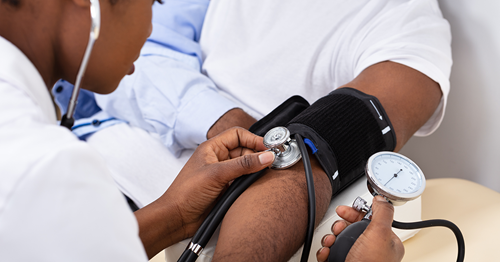Here’s a recap of the most recent efforts from the U.S. Department of Health & Human Services (HHS) to address social determinants of health (SDoH) including a new person-centered primary care model, a focus on water affordability across the country, and the launch of a clean energy connector pilot program.

A new person-centered primary care model
HHS, through the Centers for Medicare & Medicaid Services, announced this week a new accountable care organization (ACO) primary care model that aims to improve access to quality care for underserved Medicare populations by allowing primary care providers in eligible ACOs to treat patients with Medicare with a more person-centered approach. The ACO primary care flex model will include a focus on advancing health equity and addressing health disparities.
The model will provide a one-time advanced shared savings payment and monthly prospective primary care payments (PPCPs) to participating ACOs, providing them with the necessary resources and flexibility to cover the costs that come with forming an ACO as well as the administrative costs for required model activities. The ACOs will distribute the PPCPs to the primary care practices.
“We continue our work to improve the quality of care for people with Medicare by encouraging more primary care providers to participate in the ACO Primary Care Flex Model,” said HHS Secretary Xavier Becerra in a statement. “Incentivizing greater investments in primary care will promote competition among health care providers and enable more people to receive coordinated, high quality preventive care to keep them healthy – regardless of where they live. HHS will continue building on the Affordable Care Act, which not only brought more people coverage, but allowed us to develop innovative models that foster quality care, improve outcomes, reduce costs, expand access to services, and advance health equity.”
Results released from the largest water utility affordability survey
In an effort to shed light on water and wastewater affordability throughout the country, HHS, through the Administration of Children and Families (ACF), released this week the Understanding Water Affordability Across Contexts, LIHWAP Water Utility Affordability Survey Report, an analysis of the largest survey documenting water rates, arrears, disconnections, and fees across the United States.
The survey, which was conducted by ACF’s Office of Community Services for its Low-Income Household Water Assistance Program (LIHWAP), the first-ever federal water assistance program, collected information from over 1,800 water and wastewater providers across the 49 states and the District of Columbia.
“LIHWAP has met a critical need for households since its inception,” Becerra said in a statement. “The program has served as a lifeline for families to ensure one of the most basic needs – water – is available. The survey we’re releasing today demonstrates just how important water assistance is to individuals, children, families and communities that HHS serves.”
A few of the key findings include:
- On average, 20 percent of households are in debt to their water utility, with the rate increasing to 32 percent of households among tribal communities.
- The average household debt per utility is $285; however, it jumps to $502 among tribally owned utilities.
- Though nearly 90 percent of all participating utilities charge late fees, disconnection fees, and reconnection fees to help the utility offset the cost of the debt, the increasing costs of maintaining and providing water and wastewater services has caused financial challenges for many utilities.
LIHWAP has served more than 1.4 million households struggling to afford water and wastewater services. However, authorized as a temporary assistance program, LIHWAP programs across the country have closed due to limited funding, and those with remaining funds will close their programs by the end of March.
“As this program comes to an end on March 31, 2024, we are proud of the work that the LIHWAP network had done to make water and wastewater services more affordable for individuals and families and the support that we’ve provided to utilities to help them maintain water access for those most in need,” said OCS Director Dr. Lanikque Howard in the announcement. “As we examine this report, we know that there is a significant need for on-going investments in utility assistance for households across the country and we are committed to doing everything we can to support families and individuals with their unmet utility needs.”
The launch of a clean energy pilot program
The Biden Administration, through a partnership between the U.S. Department of Energy (DOE) and HHS, has launched the pilot of the Clean Energy Connector, a software tool that aims to connect families to solar energy through HHS’ Low-Income Home Energy Assistance Program (LIHEAP).
The “first-of-its-kind software” can be used by local LIHEAP program administrators in Illinois, Washington, D.C., and New Mexico to connect community solar subscriptions to as many as 40,000 households with low incomes. The initiative will lower energy bills, increase access to clean energy in underserved communities, and increase equitable solar energy deployment, HHS said.
“Renewable energy is by far the cheapest form of power and now, thanks to innovative solutions developed under the Biden-Harris Administration, more households across America can access the health and savings that solar power provides,” said U.S. Secretary of Energy Jennifer M. Granholm in a statement. “DOE’s partnership with HHS will increase the deployment of community solar, helping thousands of families lower their energy bills and in turn reduce their energy burden, ensuring Americans across the nation are included as we transition to a clean energy economy.
